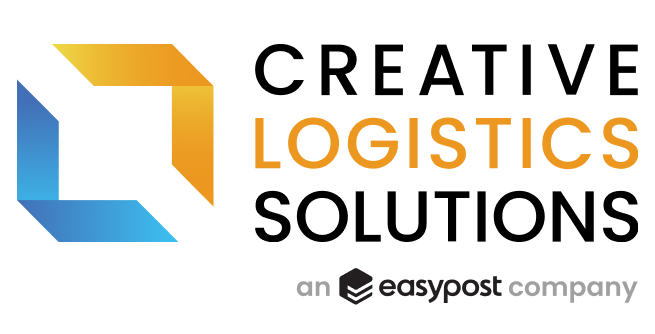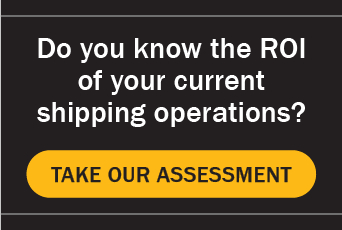What Is Omnichannel Fulfillment and Why Is It Important?
Today, consumers are holding businesses to an increasingly high standard. In search of the products they want and need, buyers demand a flexible, convenient, and smooth shopping experience. That experience can be delivered via omnichannel fulfillment.

What is omnichannel fulfillment?
Omnichannel fulfillment is a comprehensive order fulfillment process that spans multiple sales channels, both offline and online. Using an omnichannel fulfillment strategy, retailers bring brick-and-mortar stores, ecommerce sites, apps, social media platforms, and more into one integrated system. With every channel seamlessly linked, customers have more options for how they buy and receive products. For example, a customer might purchase something from the brick-and-mortar store, order through a website or app and have it delivered to their home, or order online and pick it up at the store.
The terms multichannel and omnichannel, while similar, are not the same. A multichannel model uses multiple channels to fulfill orders, but each channel operates independently. In an omnichannel model, every system is interconnected so that inventory information flows back and forth between them, creating a unified experience.
The importance of omnichannel fulfillment
While omnichannel fulfillment has its challenges, it’s becoming more popular as organizations focus on providing a “phygital” (physical + digital) experience. An effective omnichannel fulfillment approach can become the foundation of a great customer experience and better business performance.
- Improve the customer experience. Nearly three-quarters of customers say that experience is an important factor in their purchasing decisions. By providing a flexible, personalized buying experience through omnichannel fulfillment, you reach and retain more customers.
- Take advantage of flexible fulfillment options. In a world of ever-changing technology, the companies that adapt are the ones that survive. That means that flexibility is key. As opposed to a traditional order fulfillment model, which is linear, omnichannel fulfillment provides many options for delivering goods. Products can move from warehouse to customer, from one store to another, from warehouse to pickup location, and in various other ways.
- Explore alternative sales channels at a reduced cost. Over 60% of retailers cite increasing sales as the top driver for expanding their omnichannel operations. And that’s no surprise, since omnichannel is a great way to explore new sales channels without completely overhauling existing processes and systems. For example, a retailer might expand into ecommerce by adopting a hybrid shipping model and utilizing their brick-and-mortars as fulfillment centers.
- Save time and resources. Omnichannel fulfillment integrates inventory and makes it easier to keep track of stock. As data and systems are consolidated, order fulfillment operates more efficiently, freeing up time and resources.
What capabilities are important in executing omnichannel fulfillment?
To effectively execute omnichannel fulfillment operations, you’ll need to have a few specific capabilities. First, omnichannel order fulfillment requires that your stock is shared across all channels. Sharing inventory information between stores, warehouses, and distribution centers prevents stockouts or overstocking, which can lead to frustrated customers or lost profits. Interconnectivity is key; if you have multiple channels with siloed inventories, you don’t have a true omnichannel fulfillment approach.
Omnichannel fulfillment also requires a strong order management system (OMS), which allows businesses to streamline order processing and make sure that every order is picked, packed, and shipped in the most timely and efficient manner. Finally, omnichannel fulfillment offers customers multiple options for buying and receiving products. These flexible fulfillment options can include buy online, pick up in-store (BOPIS), ship from store, curbside pickup, and more.
Benefits of omnichannel fulfillment
Omnichannel fulfillment is rapidly becoming the norm in the retail world. In addition to directly improving a company’s order fulfillment operations, an omnichannel strategy has lasting positive effects on customer satisfaction and retention.
- Higher order efficiency and accuracy. Integrating multiple channels doesn’t just provide flexibility for customers—it also allows businesses more flexibility in how they fulfill orders. With additional options for inventory and order management, order routing and tracking, and more, omnichannel opens the door to more strategic (and thus more efficient) fulfillment.
- Happier customers (and more of them). A better buying experience boosts customer satisfaction and loyalty. Companies with well-established omnichannel strategies retain 89% of customers, compared to 33% for those with weaker strategies. Plus, 59% of retail leaders who use omnichannel fulfillment achieve greater customer reach.
- Stronger brand image. Customers value flexibility and personalization. If you give them multiple options for engaging with your brand, they’ll have a better experience and be more loyal—and you’ll see increased engagement with both your physical stores and online orders.
- More accurate reporting. The best omnichannel strategies track customer data to provide crucial insights into the customer journey. By measuring engagement across various channels, you can see which are performing the best and optimize processes accordingly.
Challenges of omnichannel fulfillment
While the benefits of omnichannel fulfillment are straightforward, executing an omnichannel strategy can throw companies for a loop.
- Difficult to manage inventory across channels. Because omnichannel fulfillment breaks down barriers between distribution channels, it requires full visibility of inventory and the ability to synchronize stock levels across all channels. This is great in terms of efficiency and flexibility but can make inventory tracking more complex. If you’re not careful, you can oversell or overstock a product, leading to frustrated customers or lost profits.
- Hard to develop and maintain a fulfillment infrastructure and strategy yourself. To manage omnichannel fulfillment, you’ll need an infrastructure that allows you to sync inventory, order, and customer data. With so many moving pieces, it can be difficult to make sure that every order is picked, packed, and shipped in the most timely and efficient manner. Lack of time, resources, and technical expertise are some of the most significant barriers to omnichannel development.
Strategies for successful omnichannel fulfillment
Every business’s omnichannel fulfillment strategy will look different depending on its current fulfillment systems and processes. If you’re interested in making the move to omnichannel, consider the following options and best practices.
Deciding between outsourcing and in-house
The most important choice you’ll need to make is whether to outsource omnichannel fulfillment, handle it yourself, or a combination of the two.
- Outsource omnichannel fulfillment. If you’d rather not handle the specifics of omnichannel fulfillment, you might want to consider outsourcing it to a third-party logistics provider (3PL) like ShipBob. They can focus on fulfillment so you can focus on running your business.
- Keep fulfillment in-house. If you decide to keep fulfillment in-house, you have several options. Some retailers store all inventory at their brick-and-mortar location(s), dropping orders off to carriers when it’s time to send them out. Others lease a warehouse to store inventory and hire a fulfillment team to oversee the packing and shipping process.
- Use a blend of strategies and services. If neither outsourcing nor in-house fulfillment feels quite right, consider combining the two. You might decide to fulfill some orders yourself and partner with a third party to take care of orders from a specific channel.
- Consult with a team of experts. If you’re not an expert on omnichannel supply chain (and don’t want to be), don’t worry. Consulting and advisory services like Summit Advisory Team do the heavy lifting for you, helping you build the best strategy for your business. With teams of senior-level experts, these consulting firms identify and solve operational problems to keep your business running at maximum efficiency.
Choosing the right technology
If you decide to keep some or all of your order fulfillment in-house, you’ll need to find the right technology solutions. (Summit Advisory team is also a great resource when it’s time to find the right technology.)
- Invest in a real-time warehouse management system (WMS) and order management system (OMS). For omnichannel fulfillment, you’ll need a WMS that keeps track of stock in real time. This ensures that orders are sent out from the location that makes the most sense, that you don’t have a stockout, and that products don’t get misplaced. An OMS will help you manage the entire order lifecycle, including order capture, processing, and returns.
- Make sure your shipping software can keep up. Imagine that a customer places an order and chooses the two-day delivery option. Three days later, no package is in sight. To avoid mishaps like this, it’s crucial to use shipping software like InfoShip that can keep up with the demands of omnichannel orders. Shipping software allows you to quickly compare carrier rates and delivery times, print shipping labels, and more. The result? Packages get delivered to the right place at the right time—every time.
What is an example of omnichannel fulfillment?
Now that you know the basics of omnichannel fulfillment, you’re probably wondering what it looks like in practice. In other words, what’s an example of effective omnichannel fulfillment?
Let’s take a look at a hypothetical scenario. Janet is shopping for a dress online, and she finds one she likes! She uses the reserve online, pick up in-store (ROPIS) option because she wants to try the dress on before buying it. After Janet makes the reservation, the store’s inventory management system automatically adjusts the stock level so the dress isn’t sold to anybody else. As Janet arrives at the store, an associate greets her and gives her the dress. Because the style and fit are right, she decides to buy the dress.
A few days later, Janet receives an email from the store about a start-of-summer sale. She browses the website, chooses a pair of sandals, and orders them to be delivered to her home. She is able to track her package’s journey and receives the shoes in just a few days. Impressed by the service and convenience, Janet becomes a regular customer.
Set your omnichannel strategy up for success with InfoShip
Omnichannel fulfillment is a surefire way to increase sales, boost buyer loyalty, and bring an element of flexibility to your business. But if your new strategy leads to late deliveries or additional costs, it might do more harm than good. InfoShip can help! Our multi-carrier shipping software controls shipping costs and streamlines processes so you can send out every order on time, driving more revenue and keeping your customers happy.
Learn how InfoShip can help streamline your omnichannel fulfillment model
Topics: omnichannel fulfillment,





